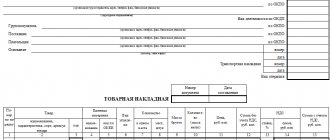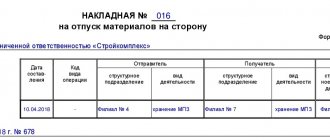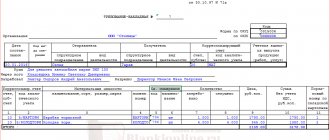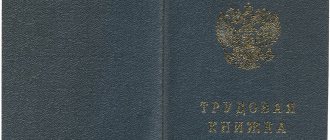Who should issue a consignment note?
If transportation of inventory items occurs directly by the owner or seller of the goods, then the execution of the document is his prerogative.
- Form and sample
- Free download
- Online viewing
- Expert tested
FILES
If an agreement with a carrier is used, which can occur both on behalf of the sender and on behalf of the recipient of the goods, then the preparation of this document may be the competence of both parties.
In other words, the 1-T form is drawn up by the company that hires the carrier.
Application of TTN
TTN is an important document when transporting goods. Based on it, the sending company writes off material assets. The recipient of the cargo also registers the goods thanks to the issued TTN. It is assumed that this document is drawn up by the sender. However, if both parties to the transaction have agreed, then the carrier himself can do this.
All business entities are required to draw up this document for any transportation of material assets. It does not matter whether the cargo is transported on a commercial basis or for personal needs; when ordering such services, the TTN must be issued by all parties involved in transportation. Participants in freight transportation can be:
- carriers who provide these services on a commercial basis. It is not at all necessary that they be a legal entity. The carrier can also be an individual;
- customers who seek services from transport companies;
- senders. These are individuals or legal entities providing cargo to the carrier. In this case, the sender himself can play the role of the carrier;
- recipients who meet the cargo make it arrive. If the recipient decides to use his own transport, he can play the role of a carrier.
This document is filled out by the consignor in four copies:
- one remains with the sender, which allows you to write off the goods. When the spent balance is calculated, the TTN acts as the primary document;
- the second copy is intended for the recipient. With the help of this document, received goods are registered;
- the third copy becomes an attachment to the waybill. With its help, the company’s accounting department calculates the driver’s salary;
- the fourth document goes to the accounting department of the carrier company. It allows you to issue an invoice to the organization that ordered this service.
After filling out the forms, the sender puts his signature. In addition, all documents are signed by the responsible employee of the carrier company and the driver who will directly perform the transportation.
( Video : “Why and who needs TTN”)
You also need to remember that the driver’s salary is calculated on the basis of the invoice. In this regard, this document must be completed for each transportation. Even if the same goods are transported each time, the driver must receive a TTN when loading, and when unloading, he must submit the invoice to the accounting department of his organization.
Document structure
The invoice can be roughly divided into two parts.
- First - commodity, - includes information
- about the sender and recipient of the goods,
volume,
- name, etc. options.
- Second part - transport. It contains information
- directly about transportation,
information about the carrier company and the specific driver,
- car make,
- travel time and mileage,
- product, etc.
This part of the document is the basis for the decommissioning of cargo from the sender's warehouse and at the same time for its receipt by the recipient.
The cost of transportation is also indicated here.
The order of filling in sections
You should take full responsibility when filling out the waybill; you should accurately indicate loading and unloading addresses, vehicle registration numbers and other information on the form. All provided data is checked by the carrier, and inconsistencies with the facts may cause a refusal of the service. In addition, the discovery of false information by government agencies will lead to additional difficulties. The preparation of the document begins with entering information about the copy number, dating and indicating the serial number of the application. The new sample technical specification includes 17 sections and is filled out as follows:
- The first section involves entering data about the shipper (full name or full name of the organization, address, telephone number, etc.).
- In the next section, the same information is entered, but this time related to the recipient of the cargo.
- The name of the cargo, information about its condition, weight values, dimensions and other necessary data are indicated here.
- The accompanying documentation that follows along with the object of transportation (certificates, permits, invoices, etc.) is listed.
- If required, the sender indicates special requirements for the transfer (special conditions for maintaining the transported object, declared value, etc.).
- Information about cargo acceptance (address of loading place, date, time, etc.). The signatures of the sender and the driver are also affixed here, and the positions of the persons are indicated.
- Information about the delivery of the cargo (address of the place of unloading, date, time, etc.). The signatures of the recipient and the driver are affixed, and the positions of the persons are indicated.
- The eighth column involves entering information about the conditions of the transfer, special conditions of movement or storage at intermediate points, fines in accordance with the contract and other features. Penalties for transport downtime, violation of delivery deadlines, etc. if there is a dash here, are determined according to the general rules regulated by Federal Law No. 259-FZ of October 8, 2007.
- The ninth section informs about the acceptance of the service order for execution.
- This section involves entering data about the carrier (company name, address, telephone number, full name of the person performing the transfer, contact telephone number).
- Information about the transport through which transportation is carried out (quantity, make of vehicle, license plate number).
- Here, the carrier, if necessary, can note comments regarding the actual condition of the object of transportation or its packaging, etc. upon acceptance/delivery, changes in conditions on the route or during unloading.
- This section reflects the route of movement of heavy or large transport (in the previous version of the document there was information about the route of the cargo).
- This section must be completed if the delivery location has changed.
- The cost of cargo transportation carried out by heavy or large-sized transport is indicated (previously the cost of moving cargo).
- Here the invoice is dated and signed by the sender and the carrier.
- Violations that occurred during transportation, fines and claims from either party are indicated.
If the information to be filled out is missing, then dashes must be added.
Rules for registration and procedure for working with the form
This document refers to primary documentation, so when filling it out, you should adhere to certain standards. In particular, you must not leave cells empty (where dashes should be placed), allow inaccuracies and errors, or enter incorrect information into the form.
Additional documents may be attached to Form 1-T:
- certificates,
- passports,
- certificates,
- contracts, etc.
All of them must be indicated in the “Attachment” line of the delivery note.
The document is printed in four copies , one of which remains with the sender of the goods, the other three are handed over to the driver who will deliver the goods.
All documents must be certified with the required signatures. Then the driver must hand over the second copy to the consignee, and the third and fourth copies must be handed over to the management of the transport company (they must have the signatures of both the sender and the recipient of the goods). After this, the third copy with the issued invoice for payment for transportation services is sent to the customer (i.e., the company that entered into an agreement for the delivery of the goods), and the fourth remains with the carrier and becomes part of its accounting records.
When is Form 1-T used?
Initially, when transporting goods, it was the TTN form that was always used. But in 2011, a new consignment note was approved, replacing 1-T in most cases.
According to the Decree of the Government of the Russian Federation dated April 15, 2011 No. 272, the transportation of goods must now be accompanied by the presence of a waybill with one exception.
The invoice form approved by this resolution is not an accompanying document certifying the legality of the production and circulation of ethyl alcohol, alcoholic and alcohol-containing products.
Therefore, it is necessary to remember the differences between the two forms. TTN can also be used in the ConsultantPlus system directly from the Decree of the State Statistics Committee of the Russian Federation dated November 28, 1997 No. 78. If you do not yet have access to the system, get trial online access for free.
In fact, it is quite possible to get by with the set “consignment note + waybill”. The TTN was simply divided into two documents. But often organizations also issue 1-T in the old fashioned way. Although there is no such obligation anymore.
Instructions for filling out the bill of lading form
- First, you need to indicate in the document its number (according to the internal document flow of the company issuing the invoice), enter the date of completion, then in the “Shipper” line enter information about the company sending the goods - here you need to indicate its full name, actual address and telephone number.
- After this, in exactly the same way, you should enter information about the addressee in the “Consignee” line.
- Opposite the designation “Payer” you must indicate the company that pays for the carrier’s services.
- Opposite each company in the appropriate box you need to indicate its OKPO code (All-Russian Classifier of Enterprises and Organizations).
Filling out the first section of form 1-T
The first section of the invoice must be filled out almost completely by the shipper. First, detailed information about the product is entered into the table.
in the first column (but only if such an accounting system is used by the enterprise), in the second and third - the price list number and article number (also only if available). The fourth column “Quantity” must be filled in - a figure corresponding to the number of goods transported for each item separately is placed here. Columns that go further cannot be skipped either: they include -
- price per unit of goods,
- his name,
- unit of measurement (kilograms, meters, cubes, etc.),
- type of packaging (boxes, crates, barrels, bags, etc.).
Then the number of pieces, weight (in tons) and total cost for each type of product separately are entered there. If there is a markup for volume or storage or transportation costs, this should also be indicated in the table. The next step is to enter the total cost of the goods for all items and in the last column the number of the goods according to the shipper’s warehouse card is entered.
If the waybill has a continuation, then you need to note the number of additional sheets in the corresponding cell (in words) and also the total number of types of goods and places (the values are duplicated from the first table).
Next, the weight of the cargo is entered in words and figures, and after that it is necessary to indicate all available attachments (number of sheets) and below, in words, the total cost of the goods released from the warehouse.
At the bottom of the product section on the left there should be signatures with transcripts of representatives of the shipper: the person authorized to release the goods (indicating his position), the chief accountant, as well as the storekeeper who directly carried out the shipment.
On the right side, the driver’s data is entered, including information about the power of attorney that the carrier company issued for him.
Later, here below is the signature of the representative of the consignee (usually this is also a storekeeper), who, with his autograph in this part of the document, certifies the fact of acceptance of the goods after transportation safe and sound.
When is an invoice issued?
In April 2011, officials adjusted the rules for Russian cargo transportation by road. The new procedure, approved by Government Resolution No. 272 of April 15, 2011, introduced an updated form of the consignment note. You will have to create a form in two cases:
- if goods, products, cargo are delivered by a third party, for example, a transport company;
- if goods and materials are delivered by a forwarder, the terms of the contract provide for the direct obligation of the forwarder to conclude a transportation agreement.
In other cases, it is not necessary to use a sample consignment note for the carriage of goods. For example, if a company delivers cargo on its own, without involving a specialized carrier.
| Who delivers goods and materials from the seller to the buyer | Who prepares the invoice | Who is listed on the invoice | Comment on filling | |
| shipper | consignee | |||
| The buyer himself | Since there is no contract of carriage, there is no need to draw up a consignment note. | — | — | Confirm transportation costs with a waybill and checks for the purchase of health insurance during the trip (Letter of the Ministry of Finance dated December 22, 2011 No. 03-03-10/123) |
| The seller himself, but the buyer does not pay for transportation separately (the price of transportation is not separately allocated in the contract) | — | — | ||
| The seller himself, and the buyer pays for transportation. Provided that the price of transportation of goods and materials is highlighted separately in the contract | Salesman | Salesman | Buyer | In the form, in the “carrier” line, the seller indicates himself. In this case, it is enough to make only two copies of the primary document - one each for the buyer and seller |
| Carrier hired by the buyer |
| Buyer | Buyer | To receive inventory items from the seller, the carrier needs a power of attorney issued on behalf of the buyer |
| Carrier hired by the seller |
| Salesman | Buyer | The invoice will confirm the reality of the transaction for the purchase of goods |









